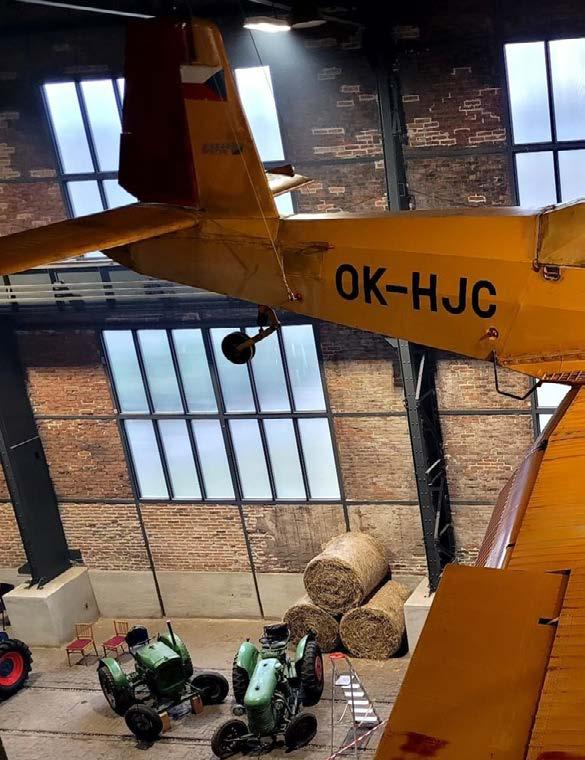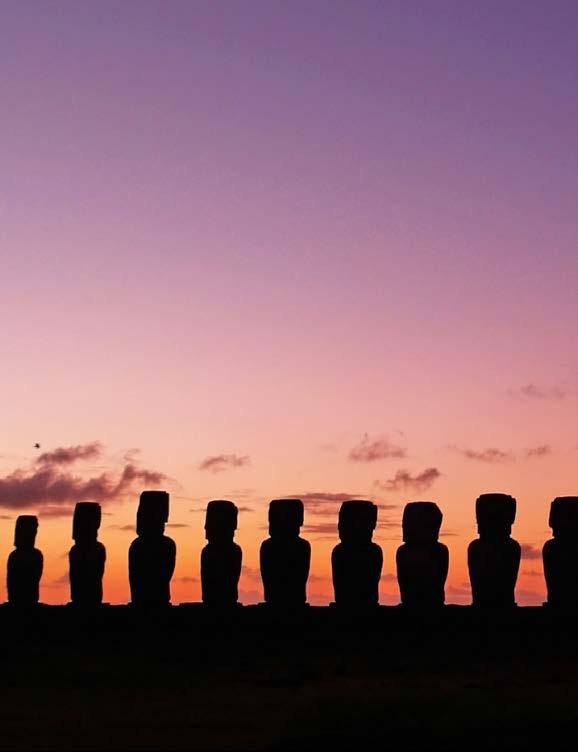
2 minute read
ČESKO, VELIKONOČNÍ ZEMĚ
The celebration of spring after a long and dark winter means an end to winter weather and a beginning of the warm and sunny half of the year. We would like to show you some customs and traditions, combining Christianity and pagan religions, which are still alive today.
Decorated eggs are the best-known symbol of Czech Easter; a symbol of fertility and a new life. At markets, on tables and on tours of the interiors of folk cottages or noble châteaux, you will see eggs that are painted or scraped, coloured using natural dyes, etched, forged, decorated with wire or perforated. The perforated eggs look like they are made of lace. A painted egg is also the most common souvenir you can bring home at Easter. Just make sure you wrap it well!
Advertisement
The date of Easter follows a lunar calendar that was used in the ancient times. That is why Easter falls on a different day every year. Easter starts with Palm Sunday, continues on Good Friday, when Jesus Christ was crucified according to the Christian tradition, and Easter Sunday, when he was resurrected. In the Czech Republic, Easter ends on Easter Monday. It is a day dedicated to folk traditions that originated a long time ago, in the pagan era.
Even before Christianity, Easter used to be an important time that our ancestors celebrated. Instead of the Resurrection of Christ, they celebrated the rebirth of nature and the victory of the good and life over winter and death. They collected medicinal herbs that have a magic power, worshipped trees and sacred groves where the good forces and gods dwelt and celebrated the returning power of the Sun around the spring equinox. Despite the fact that Christianity arrived in today’s area of the Czech Republic about
1,200 years ago and yet most Czechs think of Easter as a celebration of spring and the customs they observe are largely pagan. The Christian meaning – the celebration of the Resurrection – is usually secondary. More and more people see the Easter season as an opportunity to replenish their life force in the midst of beautiful spring nature, rather than a celebration of Christian traditions.
Czech Easter, or Easter Monday, has one specific tradition that is especially maintained in the country. Men visit women with the whip made of willow osiers. They are rewarded with a painted egg or some treats. It used to be a custom that was to ensure women stayed young and healthy all year round. This custom might seem odd to foreigners, but do not worry. It is definitely no hitting, just a symbolic act. And what to do with the whip after Easter? In some places, people plant it in the ground. It should be made of fresh osiers and so it is highly likely that a new tree will grow out of it. No holiday can do without homemade food and beverages! And what is necessary on the Czech Easter table? You will find the Easter lamb on every Easter table. It is basically a sweet cake that symbolised Christ’s sacrifice. When baked, it is gently removed from the baking tin, raisins are inserted as eyes, and the cake is sprinkled with vanilla sugar, or poured over with chocolate icing. The lamb is accompanied with mazanec, a sweet Easter bread. It is a loaf made of yeast dough with almonds and raisins, and you can have it for breakfast with some butter and jam. In many parts of the Czech Republic, you might find Easter Buns, known as Judas’ Rope. According to the tradition, honey is spread on them, and they are eaten on Green Thursday morning, if possible, before the sun rises. On Easter Saturday, when the Lent ends, the tradition requires stuffed meat to be prepared. The stuffing should be filled with fresh green herbs or young nettles that symbolize spring and awaken nature. As you can see, the Easter table is not only sweet, but also full of customs!









